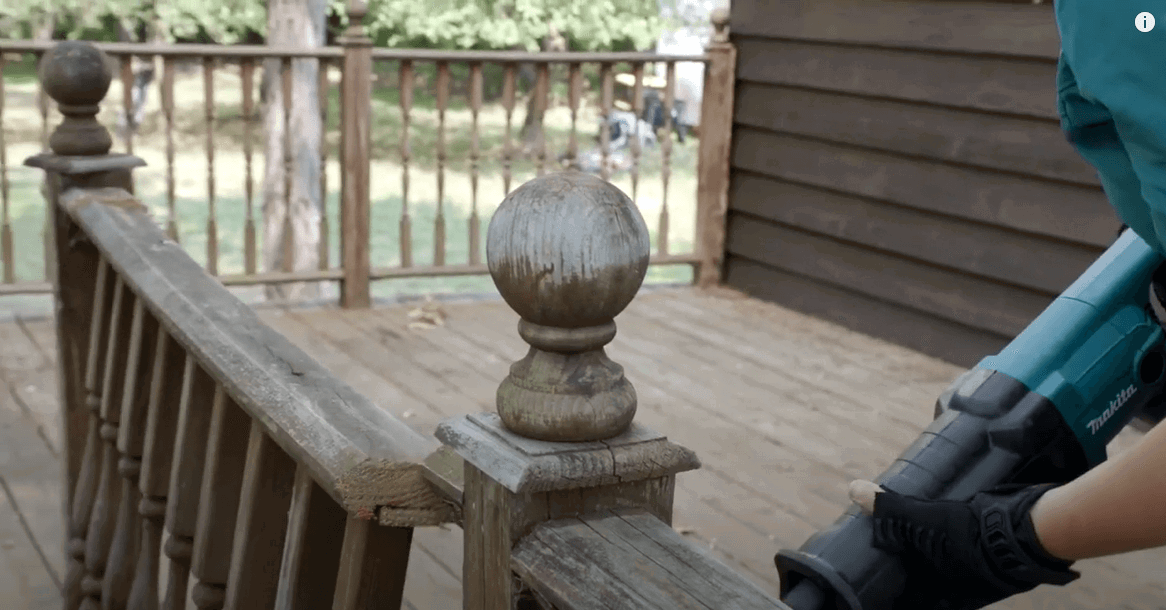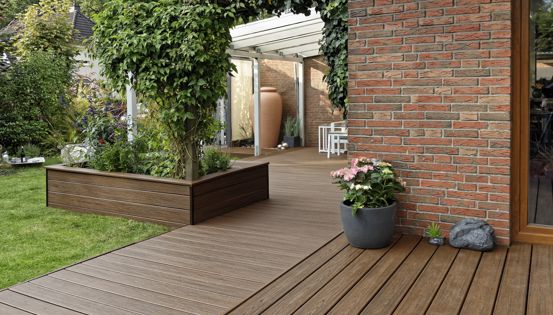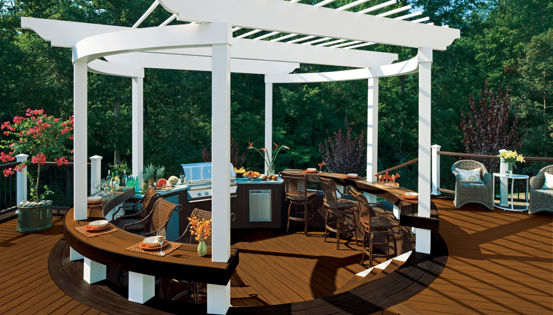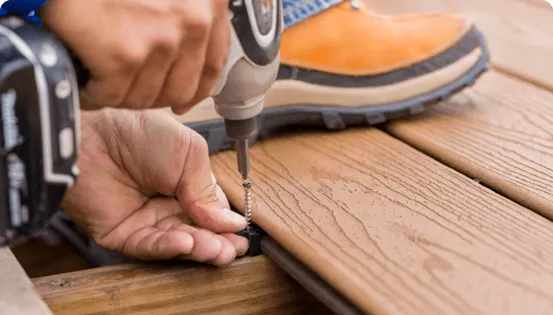With a decade or more of exposure to the seasonal elements, decks can age and deteriorate. At first, it’s possible to refasten or replace a few deck boards and make other repairs. However, if the deck is too far gone, it might be necessary to remove the deck and rebuild. Learn more about what's involved in a deck demolition and removal project.
Common Reasons to Demolish a Deck
There are a number of reasons why demolishing a deck is a good idea. It should be a simple decision to demolish decks that are:
- Unsafe
- Old/rotting
- Beyond repair
You might also consider a deck removal to:
- Enlarge or upgrade the space
- Build a shed
- Add a garden
- Install a patio
- Remodel
What to Consider Before Removing a Deck
A little planning goes a long way. First, decide whether to hire a contractor or do the job yourself. Either way, protect your landscaping and clear a pathway to haul away the debris. Make plans to replace the deck. Factors to consider include your budget and the value that replacing the deck will add to your home.
Cost to Remove a Deck
When contractors estimate deck removal cost, they base it on the size, condition, and style of the deck. Demolition of a large elevated deck will likely cost more than removing a small ground-level deck. Plan to pay a contractor $600 to $1,000 for a small ground-level deck. For DIYers, there are two costs: rent for a trailer or trash tub and the fee for dumping the debris.
Create an After-Removal Plan for your Deck
What will replace your deck? It might be another deck, a garden or a shed. Maybe consider a concrete or paver patio, which has advantages and drawbacks compared to a deck. If you plan to rebuild the deck, make sure you consider all of your options, including composite decking, which lasts far longer than wood deck boards, minimizes maintenance, and has other advantages.
Ideally, you’ll hire a single contractor both to demolish/remove the deck and to build/replace it. This minimizes the lag time between deck demolition and new deck construction, which is usually an important factor. The contractor might also discount the demolition work.
Remember to factor in landscaping, lighting, and other auxiliaries—such as an outdoor kitchen, hot tub, or firepit—when you make your plans.
Will Removing a Deck Decrease Your Home Value?
Whether removing a deck will decrease your home’s value depends on what kind of deck you have and what replaces it. Failing to replace a large functional deck with a comparable deck or patio will reduce your home’s value in most cases. That’s especially true when most homes in your neighborhood include decks. That’s why replacement planning is important.
Should you DIY or Use a Contractor to Demo your Deck?
When deciding whether to hire a contractor or remove a deck yourself, weigh the advantages and drawbacks. There is the cost of hiring a professional to consider, but you could probably save about half of the cost by removing the deck yourself by following some necessary safe steps.
Are you up to it? Consider your experience and skill level and how much time you have. If you plan to hire a contractor to build a new deck anyway, it probably makes sense to roll deck demolition and removal into that job.
How to Demolish a Deck
The best way to demolish a deck is from the top down, with each component or assembly hauled away immediately from the work zone once it’s cut free. Wear long pants, long sleeves, sturdy shoes, gloves, as well as ear and eye protection. Always work from a comfortable, steady stance and don’t overreach.
Tools & Materials Needed
Demolished decks create more debris than you might expect. Get the right size trailer or dumpster for the job. As for deck removal tools, here’s what you’ll need:
- Hammer
- Wrecking bar or pry bar
- Ratchet and socket set
- Drill/driver and bits
- Circular saw
- Reciprocating saw and blades
- Scrap plywood
- Gloves
- Eye and ear protection
Step 1: Access the Deck and Identify Safety Hazards
Open up multi-level and enclosed decks. Check for electrical connections and hire an electrician if you need to. Next, look for weak wood, missing or broken fasteners, and shaky posts. It’s not uncommon to find wasp nests or animal dens under and around old decks, too. Resolve all safety issues. Don’t try to work around them.
Step 2: Remove the Deck Railing
The railings go first. Using a reciprocating saw, cut through the bottom rail near the posts, avoiding brackets and fasteners. Do the same with the upper rail, but leave the balusters attached. Allow the entire rail section to fall safely away after it’s cut. Or have a helper hold the rail section while you cut. Haul the whole section to the trash in one piece. If it’s unwieldy, cut it in half first.
Step 3: Remove Deck Boards and Cut the Joists
How to remove the decking depends on the situation. If you can back out the screws or pry up nailed deck boards, you’ll spare yourself some labor but the job will take a little longer. For safety, use a scrap of plywood that spans at least three joist bays as a temporary platform. Bend over nails before disposing of the deck boards.
The other approach is to remove the two boards nearest the house and the last two boards at the other end. Sawing toward the house, cut through the deck boards at the center of two joist bays. Remove the cut boards with a wrecking bar or by cutting the fasteners with a reciprocating saw. Or you can leave the boards attached and cut the joists. When cutting joists, work in small sections.
Step 4: Demolish the Deck Stairs
Remove the stair railing as you did the other rail and baluster sections. Next, remove the tread boards, either by removing their fasteners or sawing them. Cut the stringers from the deck with a circular saw or reciprocating saw.
Step 5: Remove the Ledger Board
The ledger board will come off fairly easily once you unscrew the lag bolts that connect it to the house. The ledger is often a long, heavy, board(s) so stand clear of it when removing the last bolts. If you can’t pry the ledger off easily, look for lag bolts concealed by the joist hanger hardware. Cut the ledger in half or thirds if it’s too heavy to carry to the trash.
Step 6: Remove the Deck Beams
Beams are often two or three times the size of joists. Because of their weight and size, cut the beams into manageable pieces and knock any remaining pieces off the posts.
Step 7: (Optional) Dig Up the Deck Posts & Footings
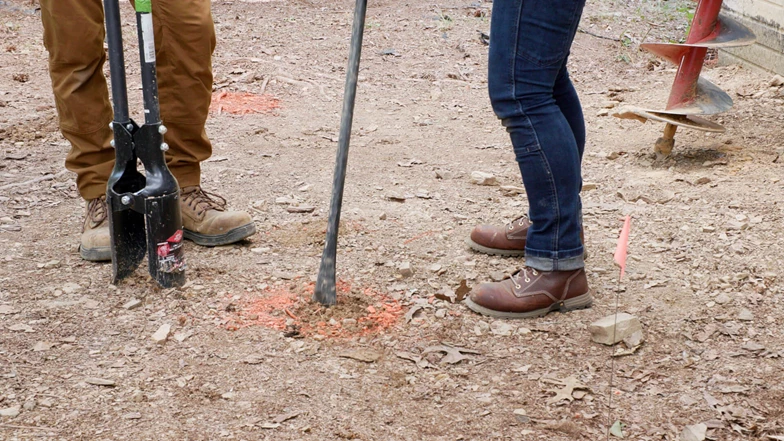
Some people cut posts to the ground and leave them in place, but it’s better to reuse them, if possible, or to remove them. If you have trouble extracting wooden posts, nail a block of wood low on one side of it and use a lever to pry it upward. You can also wrap the post with a heavy chain and use a skid steer to lift it out. This is the best option when concrete footings/posts are involved.
For more detailed instructions on how to demolish a deck, please visit Trex Academy.
Get Started On Demolishing and Removing Your Deck
Demolishing a deck is a big job, but it’s not difficult. The key is to plan your work. But if DIY isn’t for you, hire out the work. To get started, find a contractor in your area using our online tool. To shop for materials for your replacement deck, use our Find a Retailer tool.
